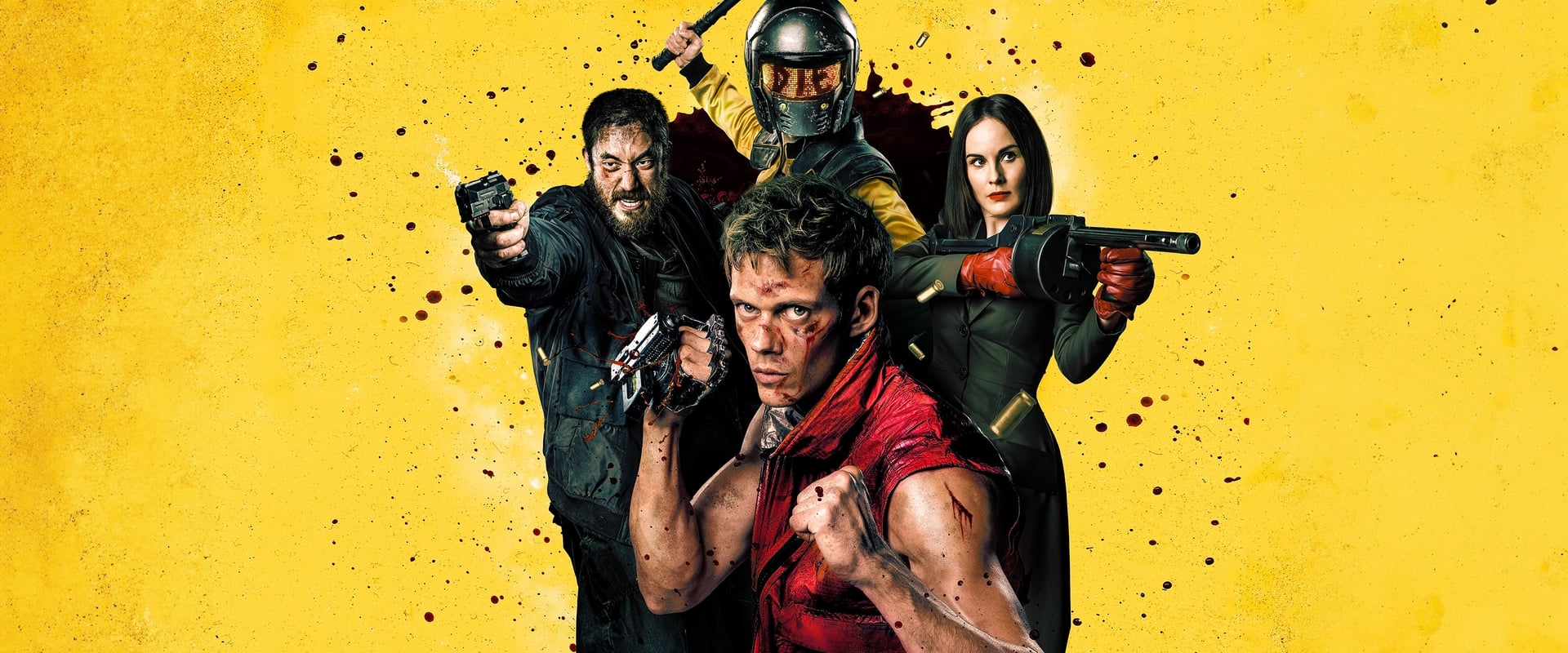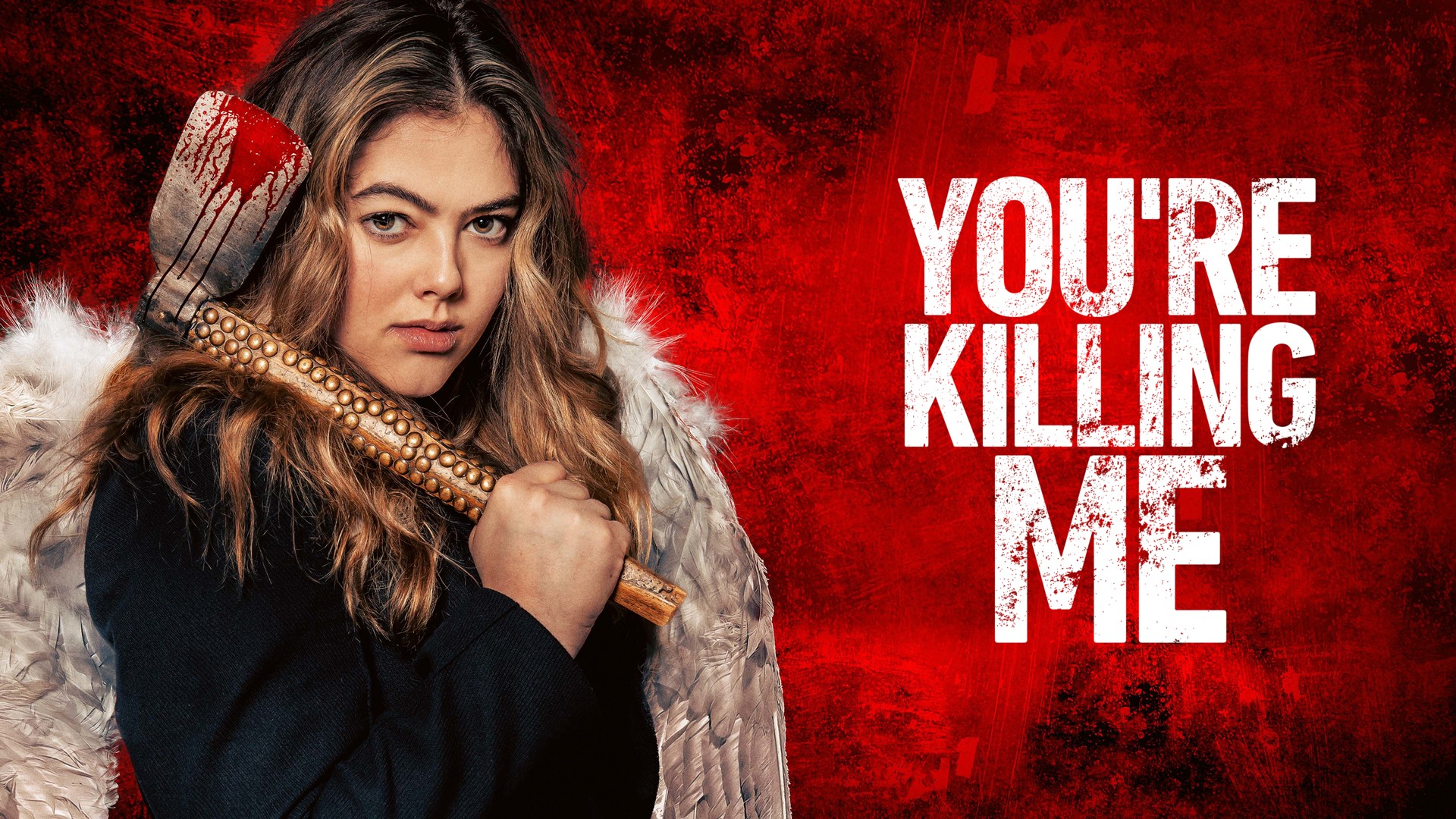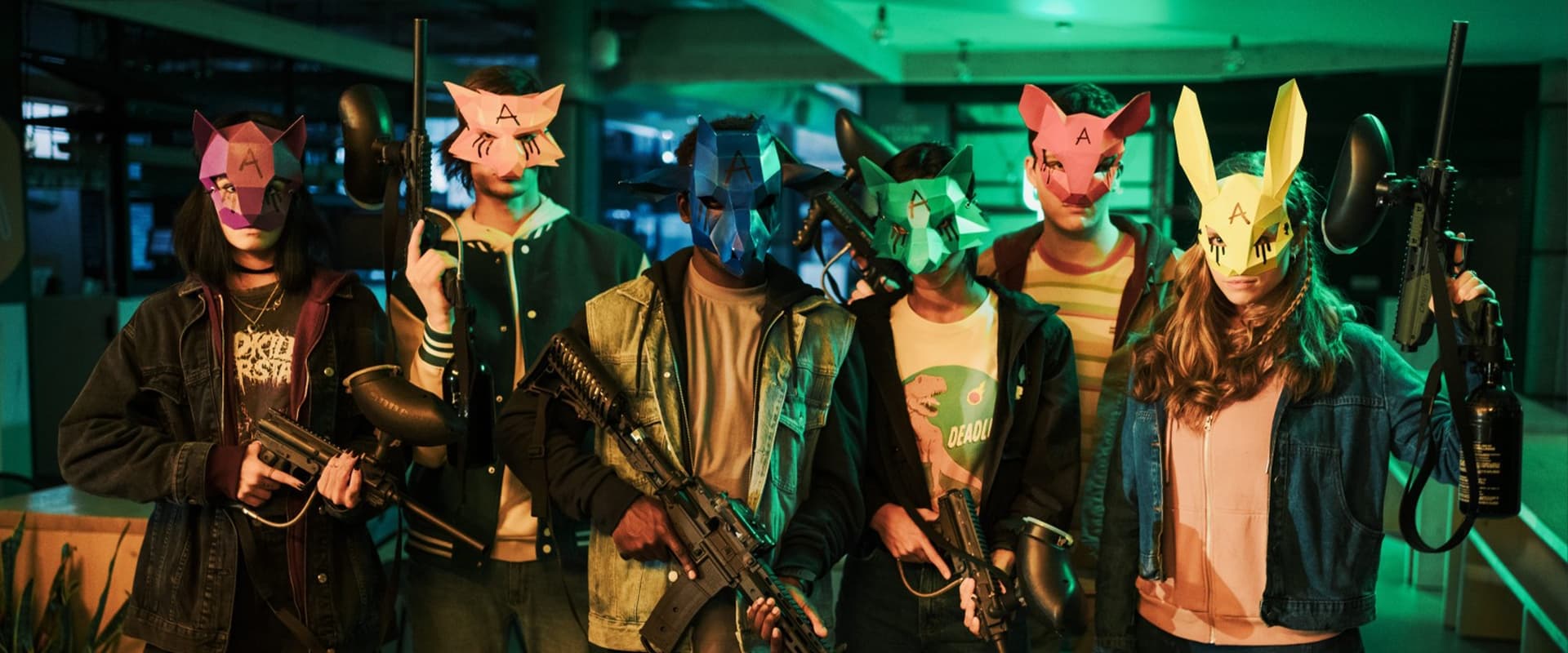Let’s talk about Boy Kills World—or, more precisely, let’s talk about a movie that doesn’t so much arrive as come crashing through your door, boots muddy, eyes wild, trailing the scent of a thousand better revenge flicks but insistently upbeat about its own nonsensical mayhem. Moritz Mohr, with the zeal of a film school grad who snorted every frame of John Wick and then washed it down with an energy drink, seems thrilled—no, positively giddy—to show us just how many ways he can make Bill Skarsgård break bodies in electric-neon slow motion. You don’t so much watch Boy Kills World as survive it, battered by waves of choreographed carnage, tongue-in-cheek nonsense, and so much color-grading you start craving sunglasses.
At the bruised, pulpy heart of this orgy is Boy—a protagonist less “deaf-mute avenger” than American adolescence squeezed into tight jeans and handed the keys to every trauma cliché in the manual. Skarsgård, pouty and rippling, stalks through the movie’s cartoon apocalypse less as a character than as a humanoid punching bag with a Greek chorus playing in his skull. In a move so self-consciously winking you can feel the director’s elbow in your ribs, Boy is voiced internally by H. Jon Benjamin, whose faux-wry monologues are either a knowing commentary on the genre or Mohr’s way of telling us, “Yes, I see the joke—I’m just not sure if you do.” The result is a strange dance: biceps and wounds on the outside, an endless adolescent monologue within, neither particularly interested in growing up.
Revenge is the entire emotional landscape here, painted with the subtlety of a toddler and the grace of a steel-toed boot. We’ve got the Van Der Koy family as the reigning champions of dystopian sadism—matriarch Hilda hosting her annual murder pageant like Breakfast at Tiffany’s staged at a slaughterhouse. The political satire is all slaughter and pageantry; the only thing missing is a laugh track. Every so often, someone delivers a line so implausibly arch, you half-expect the characters themselves to look up, wink, and mutter, “The things we do for box office.” Everyone’s a caricature and everything is surface. Where once the dystopian family drama had something sharp to say—The Hunger Games had its teeth, Battle Royale had its edge—Mohr’s world is all blood, no bite.
Oh, the action. Here’s where I’ll toss a rose—maybe even two, if the stems aren’t too thorny. The fight choreography is gymnastic, excessive, gleefully kinetic. You can feel Yayan Ruhian’s fingerprints in every limb snapped, every head dunked into some overpriced set piece. It’s a kind of violence so divorced from consequence it verges on slapstick—think Looney Tunes on designer steroids, or Double Dragon with a fixation for close-ups and CGI blood spray. There’s energy here, raw adolescent energy, but is it truly exhilarating or just numbing? Somewhere around decapitation number four you begin to wonder if Mohr isn’t trying to anesthetize us, all while giggling behind the camera at his own audacity.
The production design is where the movie almost gives itself away. The sets are Dystopia by Way of Discount Sci-Fi Channel: colors blare, lights strobe, concrete and chrome shimmer in a digital shellac, but there’s no real world outside the frame, no sense that anyone has ever lived here besides the production crew and a harried caterer. The visual style is all bombast, no mood; it’s as if someone challenged the colorist to create a kind of migraine cinema. There are moments that almost trick you—a brief flicker of authenticity, a fight so perfectly timed you nearly feel something—but each time, the script’s tin ear and the director’s overeager hand pull you back from the brink.
So what is Boy Kills World finally, if not just sensory overload? It’s a movie for the sort of young viewer who wants the pretense of darkness without any of the weight, the flash and sizzle of “subversion” minus the politics, the body count minus the ache. The script invites you to laugh, then bludgeons you over the head with the obvious punchline. Character depth? You’ll get bruises and one-liners and a post-credits “happy meal,” as if emotional satisfaction can be handed out like soggy fries after a cataclysm.
Skarsgård’s body acts rings around the script, and there’s a cheerfully self-aware strain running beneath all the nonsense—a sense that the filmmakers know they’re aping the masters, but prefer the speed and spectacle to any real innovation. It’s a movie in love with its own preposterousness, and if you let yourself sink into that big, dumb embrace, you may wring a little guilty pleasure from its cartoon chaos.
But afterwards? You’ll feel the crash of empty calories, not the surge of catharsis, and you’ll wonder if next time we might all be better off swapping our rage fantasies for that Friday night art class after all. Or, if you’re feeling truly radical, maybe even an actual conversation. And that’s the real joke, isn’t it? We want so much from our mayhem, yet settle for nothing more than another set of bruises.
You’ll remember the feeling—the jolt and dazzle, the strange aftertaste of a movie that believed in nothing but its own forward momentum. And if you ever meet someone who lists Boy Kills World as their great cinematic revelation, do them a gentle favor: hand them a real movie and a pair of earplugs.


